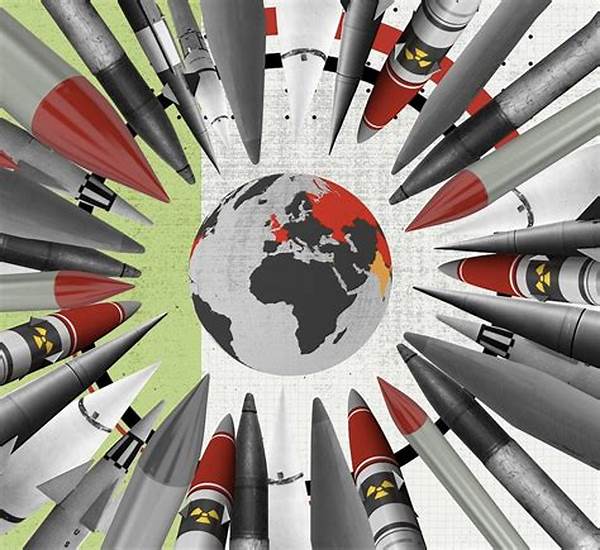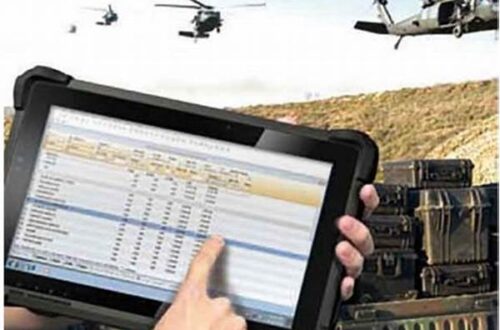Nuclear arms reduction agreements have played a crucial role in fostering global security and stability, aiming to mitigate the threats posed by nuclear weapons. These accords involve intricate negotiations between nations with the goal of reducing the number of nuclear arms, securing arsenals, and creating verification mechanisms to ensure compliance. Historically, such agreements have proven pivotal in easing tensions during periods of heightened geopolitical rivalry. The discourse surrounding these agreements is essential in understanding their role in maintaining international peace and preventing the catastrophic consequences of nuclear warfare.
Historical Context of Nuclear Arms Reduction Agreements
The historical context of nuclear arms reduction agreements reveals their fundamental role in addressing the arms race that characterized the Cold War era. Initiated by superpowers such as the United States and the Soviet Union, these agreements sought to curtail the proliferation of nuclear weapons and establish a framework for disarmament. Over time, treaties like the Strategic Arms Limitation Talks (SALT) and the Strategic Arms Reduction Treaty (START) have been instrumental in managing the nuclear capabilities of countries. Such accords paved the way for subsequent negotiations and bilateral efforts towards achieving a balance between deterrence and disarmament. By effectuating these treaties, the community of nations has laid the groundwork for broader international cooperation in the nuclear domain.
The Significance of Verification Mechanisms
1. Verification mechanisms are pivotal to the integrity of nuclear arms reduction agreements. They provide transparency and build trust among signatory states.
2. Through comprehensive inspections and monitoring protocols, verification ensures compliance with agreed-upon terms.
3. Advanced technological tools, such as satellite surveillance and on-site inspections, bolster these mechanisms by providing accurate data.
4. Verification mechanisms deter potential violations by imposing accountability and fostering mutual confidence in disarmament processes.
5. The establishment of robust verification frameworks has been a crucial aspect of sustaining durable and effective nuclear arms reduction agreements among nations.
Challenges Facing Nuclear Arms Reduction Agreements
Nuclear arms reduction agreements face numerous challenges in the contemporary geopolitical climate. Among the most pressing is the emergence of new nuclear states, which complicates the bilateral framework traditionally used for such negotiations. Additionally, technological advancements have introduced new variables into the realm of nuclear capabilities, potentially undermining existing treaties. Political instability and shifting alliances have also placed stress on the adherence to prior commitments, as nations weigh national security concerns against collaborative disarmament efforts. Despite these obstacles, the resilience of nuclear arms reduction agreements signifies their continuing relevance in addressing nuclear threats. Effective dialogue and diplomatic engagement remain critical in overcoming these barriers and advancing global nuclear disarmament.
The Role of International Organizations
International organizations play a critical role in supporting nuclear arms reduction agreements through advocacy, technical assistance, and monitoring. Agencies such as the International Atomic Energy Agency (IAEA) are crucial in providing expertise and facilitating negotiations between member states. By offering frameworks for cooperation, these organizations help enhance transparency and accountability in nuclear activities. They also serve as platforms for knowledge exchange and technological innovation, contributing to the development of effective disarmament strategies. The global community relies on the efforts of these organizations to enforce compliance and encourage a consensus-driven approach towards reducing the nuclear threat. Ultimately, their involvement underscores the importance of multinational cooperation in achieving sustainable nuclear arms reduction.
1. The IAEA provides vital monitoring tools to countries within nuclear arms reduction agreements.
2. NATO’s strategic dialogues contribute to advancing collective security while pursuing arms reduction.
3. UN initiatives foster diplomatic discussions, underscoring the significance of nuclear non-proliferation.
4. The NPT seeks to prevent further nuclear proliferation and encourage disarmament through collective effort.
5. International coalitions advocate for policy reforms to enhance the efficacy of nuclear arms reduction agreements.
6. Diplomatic exchanges facilitated by international organizations aid in resolving disputes amicably.
7. Expert panels within these bodies develop initiatives to heighten awareness about nuclear threats.
8. World summits convene to critically assess and update global nuclear policy frameworks.
9. Multilateral treaties coordinated by these entities mitigate nuclear risks collaboratively.
10. Diplomatic missions and global outreach programs deepen international commitment to nuclear arms reduction agreements.
Environmental Implications of Nuclear Disarmament
Nuclear disarmament under the framework of nuclear arms reduction agreements holds significant environmental implications. The dismantling of nuclear arsenals reduces radioactive contamination risks, ensuring a safer ecological landscape. Storage and disposal of nuclear materials are carefully managed, minimizing environmental hazards. Furthermore, transitioning away from active nuclear weaponry conserves natural resources and energy while decreasing the ecological footprint of military activities. The environmental benefits exemplify the broader impact of disarmament efforts on both human health and biodiversity conservation. By prioritizing nuclear arms reduction agreements, the global community underscores its commitment to sustainable development and environmental stewardship.
Future Prospects of Nuclear Arms Reduction
The future of nuclear arms reduction agreements hinges on adapting to evolving geopolitical dynamics and technological advancements. Emerging challenges in cyber warfare and space militarization necessitate updated frameworks to address these modern complexities. Embracing multilateral dialogue will be essential in forging enduring commitments to international nuclear security. The prospect of engaging newer nuclear powers in constructive dialogue presents opportunities for global collaboration in disarmament. Moving forward, a reinvigorated dedication to arms control will be indispensable in achieving long-term global security objectives. Collective action through innovative approaches will shape the future trajectory of nuclear arms reduction.
Summary
In summary, nuclear arms reduction agreements have served as cornerstones of international security, fostering cooperation among nations to prevent nuclear catastrophe. Their evolution from the Cold War to the present day underscores their adaptability and steadfastness in mitigating nuclear threats. As they continue to navigate modern challenges posed by geopolitical shifts and technological innovations, nuclear arms reduction agreements remain vital to maintaining peace and stability. The intricate balance of deterrence and disarmament highlights the importance of such accords. Continued commitment to verified disarmament, diplomatic engagement, and international collaboration will be crucial in ensuring the effectiveness and sustainability of these agreements. Through collective global effort, the potential for a more secure and peaceful future remains attainable.





